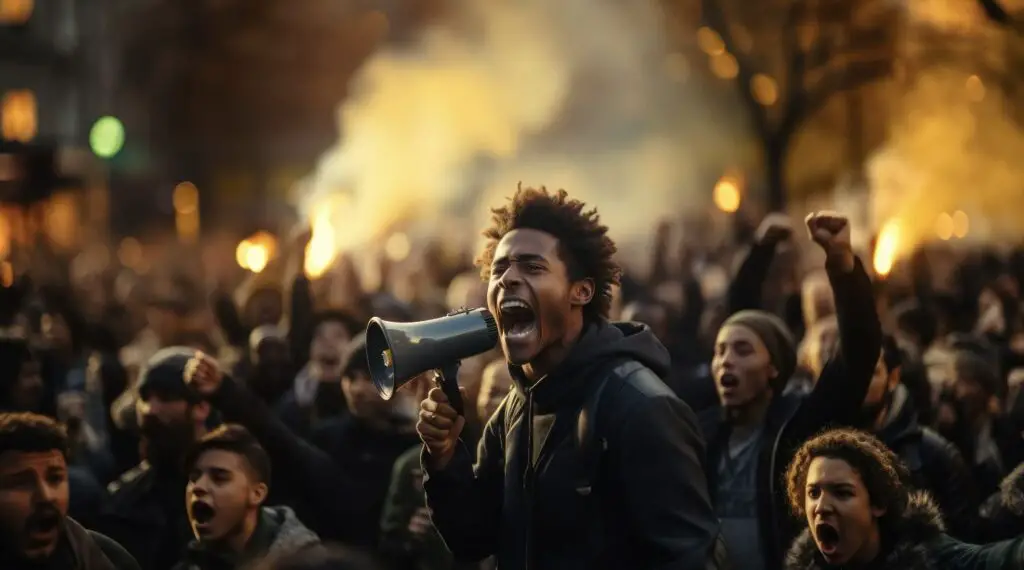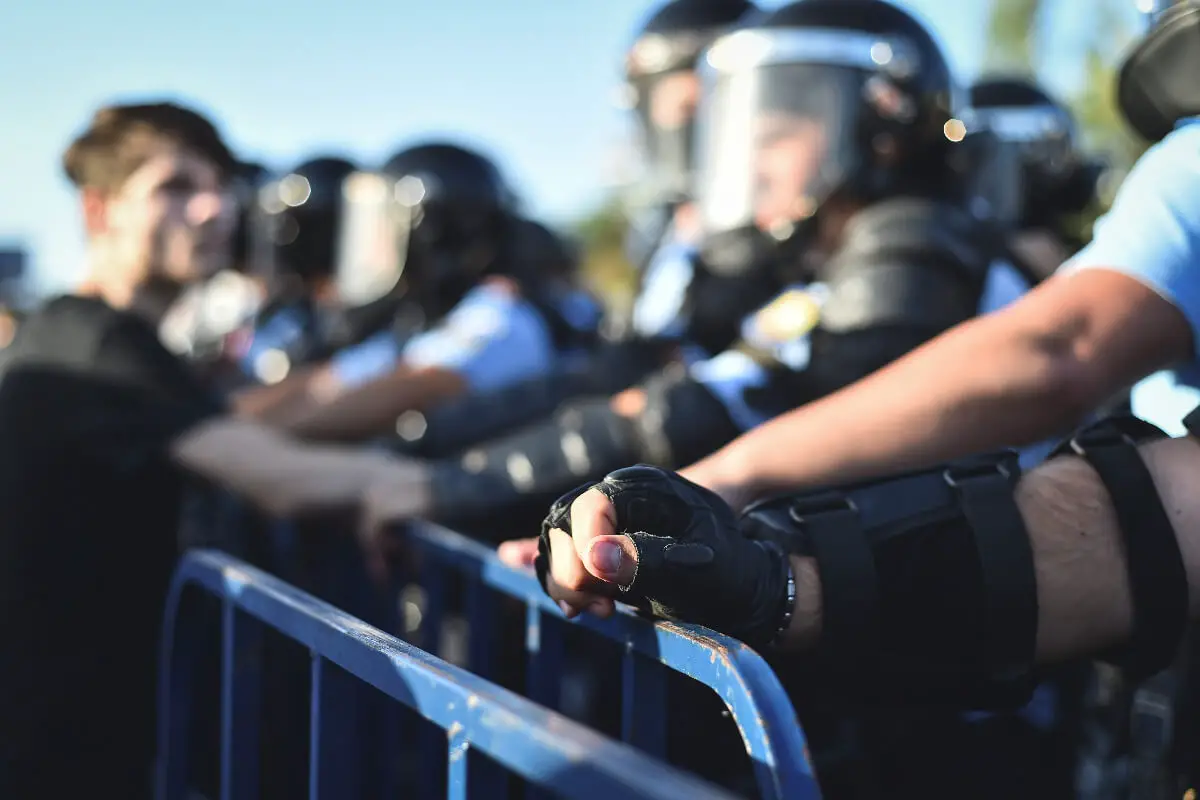Humans have witnessed political violence throughout history, invoking a profound evolution of patterns linked to shifts in paradigms, ideologies, and socio-political structures. The extensive examination of political violence offers an enlightening journey, from its genesis in early statecraft to its manifestations in contemporary times.
Amidst the shadows of fallen empires, the dawn of democracy, and the revolution of global ideologies, the changing contours of political violence are etched, reflecting the tumultuous interplay of power, resistance, and conflict. The intricate webs of social, economic, and ethnic elements knead the clay of violence, with influential roles from state and non-state actors adding nuanced undertones to the narrative. As we unmask the current trends, consequences, and critical potential for mitigating political violence, we delve deep into a topic that is as complicated as it is consequential for our world.
Table of Contents
- The Historical Development of Political Violence
- Trends in Political Violence
- The Prospect of Mitigating Political Violence
- Related Content:
The Historical Development of Political Violence
Continuing in this vein, we must intersect our discussion with paramount modes of political violence enabled by globalization and technological advancements. A cogent distillation of this is the emergent configuration of Hybrid Warfare.
Hybrid warfare represents a confluence of traditional forms of violence, cyber warfare, and information warfare. In an age characterized by unprecedented global connectivity and dependency, the ability to disrupt a nation’s political system through disinformation campaigns, economic sabotage, and diplomatic subterfuge becomes as powerful as a physical attack.
While this insidious form of conflict lacks the immediacy and visibility of conventional warfare, it should not be understated in its potency to destabilize and reshape political landscapes. Take, for instance, Russian interference in the 2016 US elections as an illustration of how information manipulation and cyber-attacks can operate as political weapons.
In this context, it is pertinent to discuss further the intricate dynamics of global power politics. Global Power Politics strategizes military strength, economic influence, and ideological appeal to exercise influence over its adversaries.
Political violence becomes an instrument of asserting dominance or responding to threats. Examples could be seen in Cold War politics, where proxy wars were fought, or in American foreign interventionism, where regime changes were orchestrated.
Conversely, this delicate balance of power has also been seen as a restraining force against overt violence. The concept of Mutually Assured Destruction (MAD) during the Cold War illustrates this restraint, where the prospect of nuclear annihilation enforced a precarious peace between superpowers.
Protracted conflicts such as those in Syria and Yemen signify a new paradigm of political violence. Fragmented power structures, porous national boundaries, and international interventions have compounded these conflicts. Political violence in such contexts often manifests as civil wars, human rights abuse, and humanitarian crises.
In parallel, we must also reflect upon domestic insurgencies, where marginalized groups resort to violence in pursuit of political self-determination. From Al-Qaeda in the Middle East to Maoists in India, these non-state actors pose significant challenges to national and international security.
Furthermore, climate change and environmental scarcity could incite future political violence. The detriments of climate change can potentially exacerbate economic inequality, incite conflict over dwindling resources, and cause large-scale displacement, posing multifaceted threats to global stability.
In closing, the complicated socio-political fabric underpinning the usage of violence in politics demands an astute understanding of global dynamics. The delicate interplay of power dynamics, technological advancements, economic disparities, and environmental imperatives determine the course and character of political violence.
Our grasp of these constructs will play a crucial role in shaping future strategies to curb the destructive ramifications of political violence.

Trends in Political Violence
Shifting our perspective, we must consider an emergent trend: hybrid warfare. This form of warfare amalgamates traditional violence with cyber warfare and information warfare. It is not a stand-alone doctrine but a strategy that adjusts dimensions and tools according to the specifics of each conflict.
Unmistakably, it presupposes a transformation in how political violence is conducted, not solely as an act of physical aggression but as a smokescreen for data breaches and information manipulation.
Clearly illustrated in the controversial 2016 US elections and alleged Russian interference, cyber warfare and manipulation of information have soared to heights beyond the conventional understanding of political violence.
By exploiting the vulnerabilities inherent in democratic institutions, these actions are politically violent and have far-reaching consequences that continue to reverberate in the current geopolitical stage.
The ongoing aspects of global power politics also define contemporary political violence. Beyond relying merely on military strength, this strategy harnesses the might of economic influence and ideological appeal.
This inflicts a different form of violence, where significant powers wield their resources and ideas to direct and dominate global interactions and alliances.
The epoch of the Cold War is also pivotal in understanding the evolving equation of political violence. The period was marked by indirect confrontations through proxy wars and regime changes, subtly endorsing violence without attracting the spotlight of global conflict. The concept of Mutually Assured Destruction (MAD) acted as the Sword of Damocles, instilling a precarious equilibrium that actively deterred overt violence.
Today’s protracted conflicts, such as those in Syria and Yemen, represent another aspect of contemporary political violence. These situations manifest as states of perpetual civil war, considerable human rights abuses, and grave humanitarian crises. Each conflict deepens the fracture lines of regional stability, escalating violence within and beyond their borders.
Yet another menace comes from non-state actors, like Al-Qaeda or Maoists, embroiling nations in domestic insurgencies, which pose severe challenges to international security. This trend emphasizes the growing sway of non-state outfits in manipulative political violence, augmenting the convolution of an already complex issue.
Last of all,
Hybrid warfare, an amalgamation of conventional military tactics, cyber-attacks, and information manipulation, represents a crucial development in recent years. Traditional channels of aggression are now potentiated by the anonymity and global accessibility that digital platforms afford.
The implications of this shift were glaringly apparent during the alleged Russian interference in the 2016 US elections, where information warfare seemingly superseded conventional political tactics.
In the realm of global power politics, the strategies of military strength have traditionally dominated discourse. However, the ascendancy of economic influence and ideological appeal often termed soft power, can’t be underestimated.
These more insidious – but no less impactful – forms of influence can destabilize established power structures and dramatically shift geopolitical dynamics.
Reflecting on epochal periods like the Cold War, instigating proxy wars and frequent regime changes heightened political tensions but did so indirectly. Yet, these actions profoundly impacted target nations, irrecoverably altering their trajectories and legacies and deepening international mistrust and hostility.
A cursory glance at the protracted conflicts in Syria and Yemen reveals the devastating cost of political violence—humanitarian crises, widespread atrocities, and a desperate erosion of human rights. This pacifies national resilience and international security, further exacerbating refugee crises and enlarging the diaspora of displaced individuals.
Insurgencies led by non-state actors like Al-Qaeda and the Maoists have fundamentally challenged traditional concepts of national and international security. Their fluid organizational structures, ideological appeals, and transnational operations often exploit vulnerabilities within nation-states, intensifying the stakes of political violence.
Climate change and environmental degradation hint at an unsettling potential for future conflict. Battles over increasingly scarce resources and displacement due to environmental cataclysms could spur new waves of political violence and unrest.
Understanding these global dynamics is a prerequisite to navigating this convoluted landscape. It’s a multidisciplinary challenge that requires synthesizing expert insights from political science, sociology, history, technology, climate science, and global security – fundamentally crucial to inform effective counter-strategies and prioritize diplomatic resolutions over violent engagement.
As the nature of political violence incessantly evolves, so too must our approaches to understanding and mitigating it.

The Prospect of Mitigating Political Violence
Mitigation of Political Violence: Strategies and Approaches
While the manifestations and motivations of political violence are complex and multifaceted, several strategies may help prevent, manage, and mitigate this critical social problem. However, It is essential to remember that these strategies should be implemented with sensitivity towards the particular cultural, social, and political contexts at hand.
Embracing diplomacy and fostering negotiation skills can significantly aid in mitigating political violence. Diplomatic measures, such as peace treaties and international agreements, represent opportunities to resolve conflicts in a non-violent manner.
Implementing negotiation skills and mediation, such as those used in the Camp David Accords or the Good Friday Agreement, have proven to resolve disputes that could otherwise escalate into political violence.
Second, developing and reinforcing democratic institutions may reduce the likelihood of political violence. Democratic systems, by their nature, provide channels for peaceful dispute resolution and mechanisms for citizens to express grievances, reducing the attractiveness of violent activities to effect change.
By building robust democratic infrastructures like independent judiciaries, free press, and free and fair elections, societies can help to subdue the soil from which political violence often sprouts.
Furthermore, strengthening social cohesion, inclusivity, and equality can act as a preventative measure against the onset of political violence. Societies that are marked by high levels of inequality and social exclusion can often breed resentment and hostility that, in turn, result in political violence.
Creating more inclusive and equal societies through public policy and community programs can address the underlying causes of tensions, reducing the likelihood of political violence.
Education also plays a crucial role in mitigating political violence. By fostering a broader understanding of conflict resolution, empathy, and respect for diversity, educational initiatives cultivate a society that better understands and appreciates peaceful means of expressing and resolving disagreements.
Finally, an international response is needed to deal with the complexities and transnational nature of today’s political violence. International norm-setting, such as the Rome Statute of the International Criminal Court, creating an institution to hold individuals accountable for crimes against humanity, war crimes, and genocide is a strong deterrent.
Additionally, international cooperation in the battle against cyber warfare and cybercrime, such as recent efforts by NATO, is essential in today’s interconnected world.
In conclusion, while political violence is a multifaceted issue with intricate roots, specific comprehensible strategies can be executed to mitigate the risks. These approaches, which deal with both the root causes and the surface-level outcomes of political violence, aim to build societies where disagreements can be handled in a peaceful, respectful, and democratic way.

We journey to the fringes of political violence to unearth its broad repercussions on the societal fabric, the dynamics of politics, human rights, and the fundamental pillars of development.
The flux of violence shapes policy and academics by either invigorating change or reinforcing the status quo in various social and political constructs. Mirroring the vigils of a darkened plight, rays of hope indicate potential recalibration through possible mitigation strategies.
From diplomatic approaches, legislation modifications, and enforcement actions to fostering social cohesion and encouraging peaceful resolutions, these tasks present an intricate feast of complexities.
Thus, the study of political violence, with its patterns, implications, and mitigation possibilities, not only provides a rich historical continuum but also carries the weight of obligations we owe to a more peaceful future.
At Project Sprouts, we realize that we can not solve all the problems in a situation like this. But we can seek to make a difference in the lives of needy children by giving them school supplies and encouraging them to continue their education; we can give them winter coats, boots, and blankets to help them stay warm during the cold winter months.
Project Sprouts would love to have you be a part of our community and help us help worthy children in North Vietnam.
You can find out more about Project Sprouts by clicking here or going to our give now page to donate by clicking here. As we are a grassroots organization, all funds help those in need.
Related Content:
Homeschooling – Better Or Worse?
Since the dawn of civilization, it is undoubtedly imperative that young generations are well-educated to contribute to their nations. Therefore, how to provide the best education quality for students still lingers. Therefore, in this day and age, learning at school has been a hot topic of debate when many people wonder about its quality and effectiveness for children.
You can learn more about Homeschooling – Better Or Worse? by clicking here.
Can Robots Replace Teachers?
With the prevalence of the COVID-19 pandemic, students and teachers are now adopting distance learning as one primary teaching method. Some scientists and scholars have started raising the question of whether this pandemic has facilitated the replacement of teachers with technological advancements and whether soon robots or Artificial Intelligence (AI) can take over the educational system?
You can read more about Can Robots Replace Teachers? by clicking here.
Does Family Background Affect Student’s Academic Performance?
Children’s performances at schools are indirectly and directly influenced by their family background. It is crucial to understand how family backgrounds impact students’ achievement because only by taking into account this factor can we reinforce current policies regarding education, especially “Equality in Education”.
You can discover more about Does Family Background Affect Student’s Academic Performance? by clicking here.

